Last Updated on October 20, 2022
How is Plastic Made? Well, you aren’t the only one wondering about the process of making plastic and this guide will help!
We will discuss the various chemicals in plastic as well as answer questions like “how is plastic made” and “what is plastic.” Most of us use plastic every day, so it’s important we understand the risks associated with it.
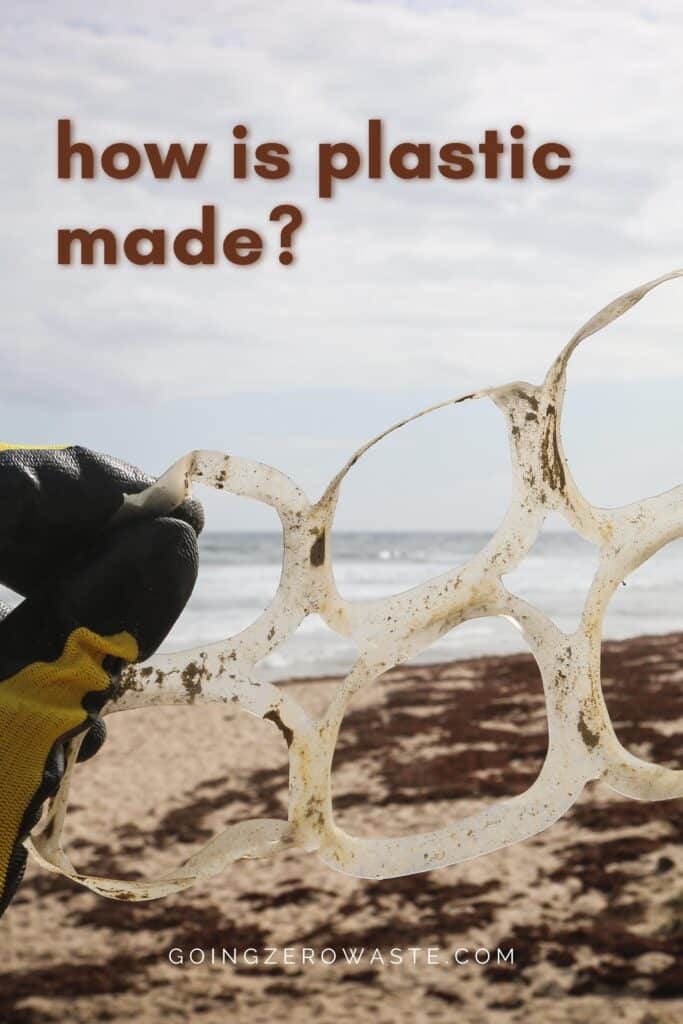
Table of Contents
how is plastic made
I talk a lot about plastic. I have many blog posts dedicated to avoiding single-use plastics, the dangers of plastic and microplastic pollution, and even about all the 7 different types of plastic…
But, one post missing from my plastic arsenal starts at the very beginning… how is plastic made, and what is the environmental impact of making plastic?
what is plastic?
Now, there are two different types of plastic: synthetic and bio-based.
Bio-based plastics are made from renewable materials like vegetable fats, vegetable oils, carbohydrates, starch, bacteria, and other biological substances. Some of these are compostable and some are not, but that’s another post.
This article is specifically going to focus on the production and creation of synthetic plastics.
I’m also going to try and break the process of making plastic into very simple and easy-to-understand terminology because a lot of the articles on the creation of plastic read like a textbook that’s best for putting one to sleep.
If anything seems like a gross oversimplification, I’ll have all my sources linked if you want to dive deeper into the manufacturing process further.
So, let’s start at the very beginning.
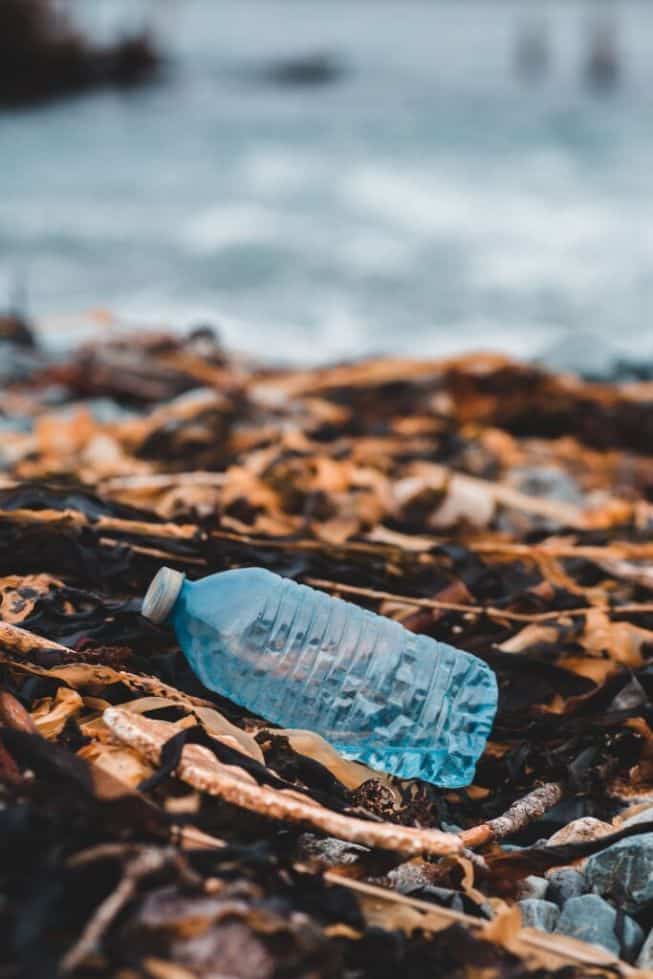
what is plastic made from?
Simply put, synthetic plastics are made from fossil fuels.
what are fossil fuels?
Fossil fuels like coal, gas, and oil were formed in the geological past from the remains of living organisms – basically old dead things.
While plastic can be made from coal, it’s not very common. It’s typically made from oil or natural gas.
Oil is extracted from the Earth using a pump, and if you grew up like I did, watching TV Land with your grandmother, your first memory associated with oil is probably The Beverly Hillbillies.
I don’t think natural gas has a hit TV show associated with it, but natural gas is drilled from the ground. (source)
Once these fossil fuels have been extracted, they need to be transported to a petroleum refinery.
RELATED: 10 Easy Swaps for a Plastic Free Life
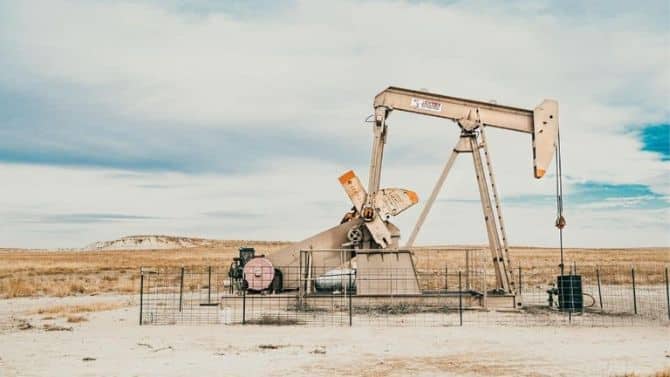
what happens at the refinery?
First, the crude oil has to be separated into different components based on weight and boiling points.
To get this process started, the crude oil is heated in a furnace and then distilled. This is called fractional distillation which is the process of separating a mixture of chemical compounds.
Fractional distillation is accomplished by heating a mixture so that each fraction evaporates and then condenses in its own compartment.
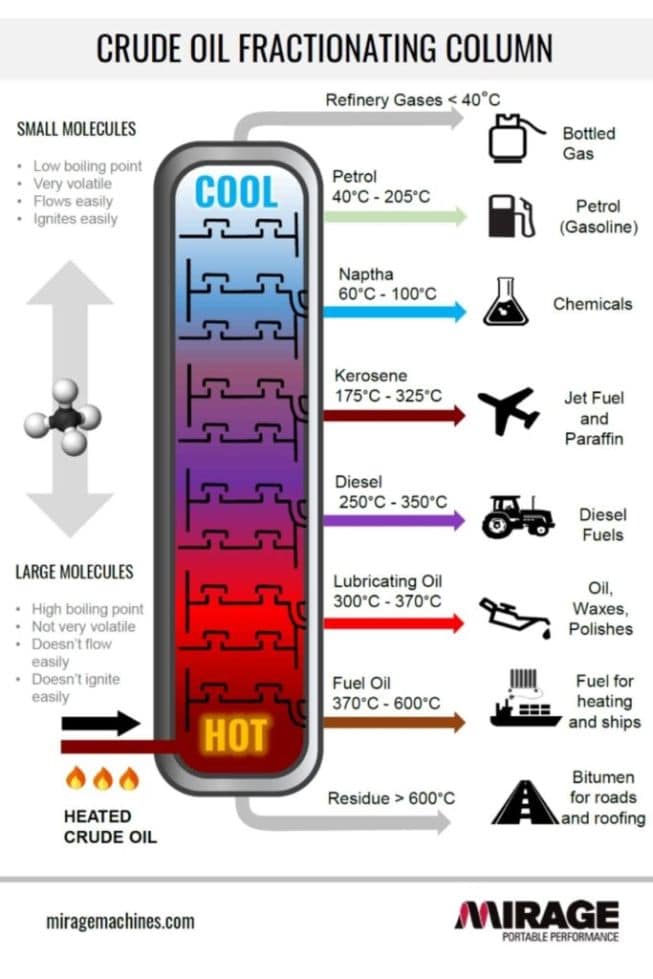
Here’s a breakdown from miragemachines.com that illustrates 8 of the different components crude oil will be broken into.
The blue arrow, naphtha, or ‘chemicals’ is what we’re interested in for the creation of plastic.
But, Naphtha also has other common uses like paint thinner and cleaning agents which is just another reason I choose all-natural and eco-friendly cleaners.
Now, that we’ve isolated the naphtha it’s time to get cracking.
RELATED: Is Buying Recycled Plastic Eco-Friendly?
what is cracking?
If you’re familiar with plastics, then you would have gotten my excellent pun, but if you’re just learning, that’s OK. You can re-read this post and have a great laugh later.
Naphtha needs to be broken down even further and that process is called cracking.
This cracking process creates hydrocarbons like ethylene, propylene, and butylene. Now, if you read my post the seven types of plastic you need to know, you might recognize a few of those words.
Polyethylene terephthalate is plastic #1 and used for drinking bottles, and polypropylene is plastic #5 and often used for yogurt tubs.
See, seeeeee – the process of making plastic is all coming together!
RELATED: What to Do With Old Plastic When Going Plastic Free?
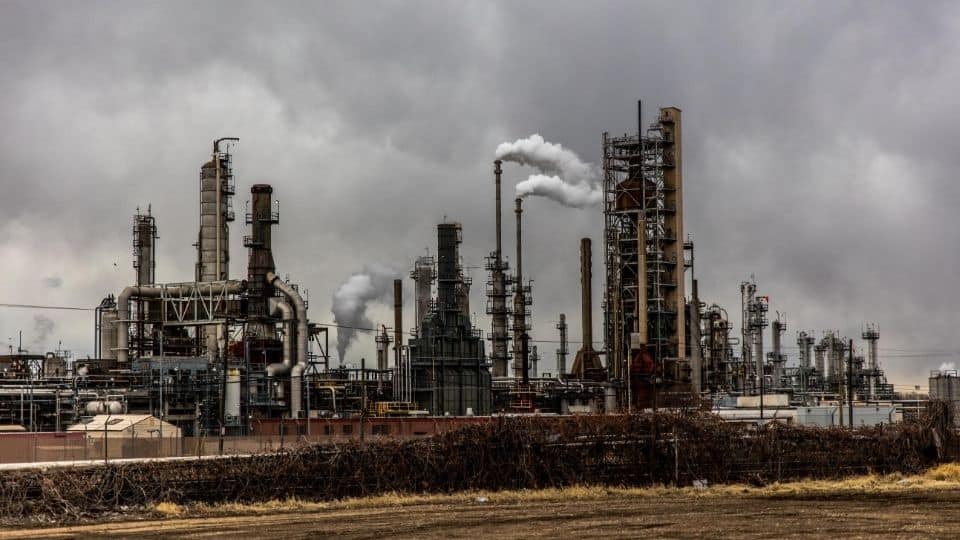
is that it?
We’re not quite done, but we’re getting pretty close. The next part is really dense and super sciencey.
This article does the best job of breaking it down into simpler terms, and is a lot more thorough than the brief description I’ll be offering below.
Once ethylene and propylene have been created, the next step will either be an addition reaction or a condensation reaction.
Both types use different catalysts and processes to create the seven types of plastic we know today.
But, at this stage of making plastic it isn’t made into shapes right now, it’s made into pellets or nurdles which will be remelted down in a different factory to create shapes.
In its current stage, it’s a polymer “fluff” that looks similar to sugar or powdered laundry detergent.
This “fluff” is fed into an extruder, where it’s melted down and runs into a pipe where it’s allowed to cool.
What’s in the pipe is turned into small pellets or nurdles which are shipped to factories all over the world in order to create things like bottles, milk jugs, auto parts etc.
RELATED: 6 Ways to Reduce Plastic Pollution in the Ocean

to simplify even more:
To boil the entire question, “how is plastic made?” into just one sentence, it starts with oil or natural gas that’s been extracted from the earth and then separated, separated again, and then separated again, and then had a bunch of stuff added to it, chopped into teeny-tiny pieces, and then shipped to factories for molding and shaping.
the demand for plastic is growing:
Now, that we understand how plastic is made let’s get to a few of the environmental impacts.
On the blog, I’ve discussed the impacts once it’s on the store shelves or in the environment so I want to specifically discuss the impacts during the extraction and manufacturing process.
Don’t forget, plastic is made from oil and natural gas so this is just another way for big oil to keep fossil fuels freely flowing through our economy – and trust me… it’s flowing.
Plastic output is increasing at a significant rate.
The global plastic packaging market is expected to be worth $269.6 billion by 2025. (source)
The World Economic Forum predicts that plastic production will double in the next 20 years. (source)
RELATED: Which is Better for the Environment – Glass or Plastic?

environmental and health impacts:
The refining of crude oil and extraction of natural gas can release toxic chemicals that pollute the atmosphere, water, soil and more.
This, of course, is a problem for the environment, wildlife, and animals, but it’s also a major problem for humans!
One of the largest concentrations of these petrochemical plants is nicknamed ‘Cancer Alley’ which spans an 85 mile-long stretch along the Mississippi River.
This stretch between New Orleans and Baton Rouge is packed with oil refineries and petrochemical plants nestled into suburbs and vulnerable communities.
According to the EPA, the air in Cancer Alley is 99.6% more toxic with cancer-causing chemicals than the entire area throughout the seven Mississippi River parishes which leads to a lot of health problems.
In fact, people living near Cancer Alley are 50 times more likely to get cancer than the average American. (source)
here are three quick ways you can help:
- Sign the change.org petition to prevent another major petrochemical site from opening in the area.
- Donate to the Louisiana Bucket Brigade with the goal of ending petrochemical pollution in Louisiana.
- Share! Chat about these problems with friends and fam. You can share this article or my Instagram post on the topic of the process of making plastic.

what are the chemicals in plastic?
Here are just a few of the toxic chemicals released from extraction, along with some of their documented effects on human health:
- Benzene can effect the bone marrow and cause a decrease in red blood cells, leading to anemia. (source)
- Toluene can causes headaches, dermatitis, insomnia and kidney damage. (source)
- Ethyl benzene can cause respiratory problems, and at a chronic exposure level, it can damage the liver and kidneys. (source)
- Hydrogen sulfide can cause tremors, convulsions, headaches and seizures (source)
My friend Jess, a science teacher, from @thoughtfullysustainable did a great post on this on her instagram. She also co-wrote on of my favorite guest posts on 3 Sustainability Science Experiments For Kids.

further learning:
I’m going to link to many of the sources I found helpful when creating this post if you’d like to dive deeper.
- American Chemistry
- This is Plastics
- The New Plastics Economy
- Ellen MacArthur Foundation
- The Story of Plastic – documentary
- Mossville Project – documentary
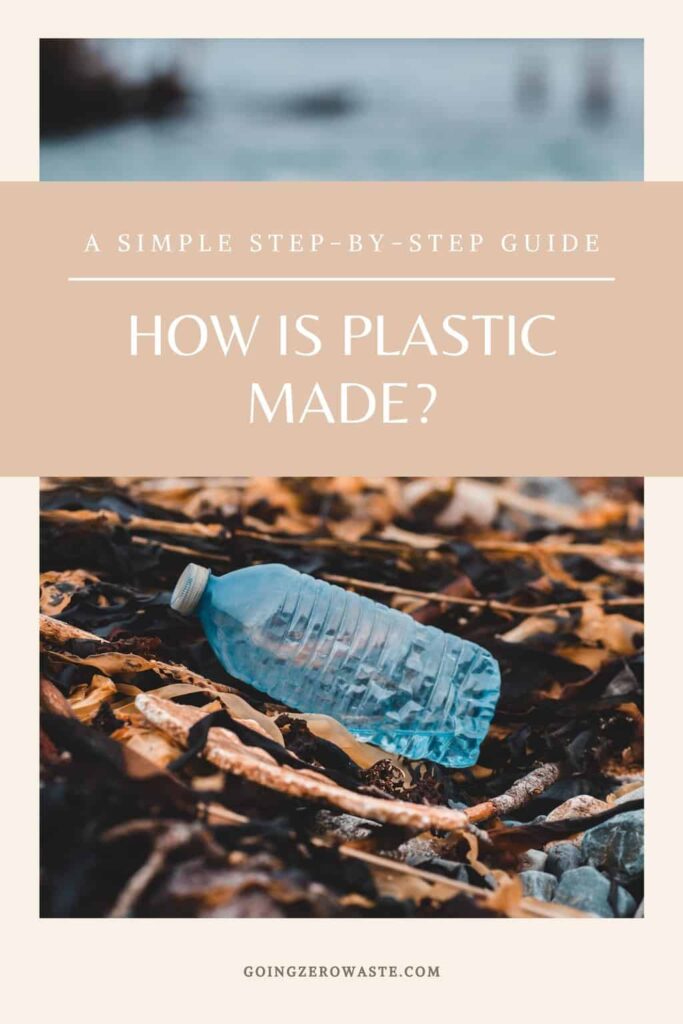


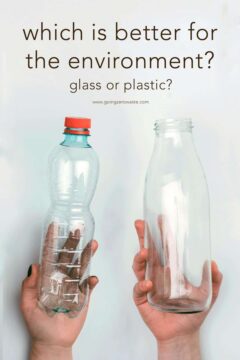








Yeah things are seriously getting worst with plastic and still, we are paying zero attention towards making an actual impact :/
This article is so amazing
This is a truly effective and innovative way to recycle plastic.
I hope the government will pay more attention to the plastic pollution how to bring the harm of the world.😭😭🥺
We really have to focus on the treatment of plastic
Thanks for sharing awesome blog!